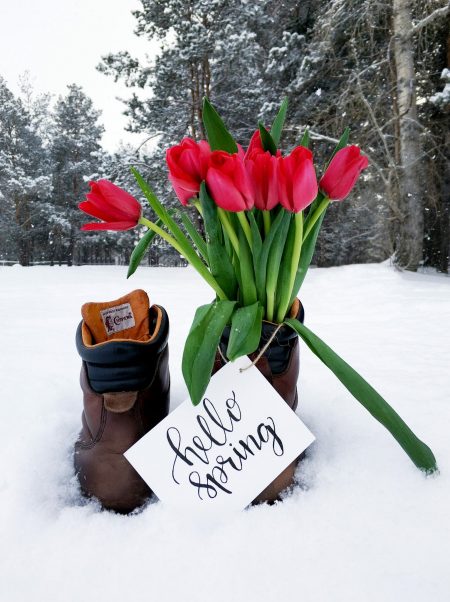As soon as Spring is here, plant-lovers can hardly wait to tend to their flowers or plant new ones. Ohioans are familiar with mild Spring weather with temperatures ranging from the 50s to the low 60s. However, a few times during spring these ideal temperatures are subject to seasonal disorder, and frost ensues. For plant-lovers looking forward to seeing their spring landscaping in bloom, this is frightening news. Necessary measures are needed to ensure your plants aren’t caught off-guard when Ohio weather brings late spring frost.
Will Late Spring Frost Kill Spring Blooms?
It is possible for plants to become damaged or even killed as a result of spring frost. These factors depend on the type of plants, time period of frost, age and the varying levels of frost, which range from mild to severe.

When frost occurs in fall or winter, plants have a higher chance of survival because they have become acclimated to colder temperatures. However, in the case of late spring frost, plants that have already gotten used to the warmer weather are thrown a curveball when they are hit with frost.
A light frost may cause minimal damage while a severe frost may kill plants. Young, vulnerable plants are much more susceptible to a light freeze, which occurs when temperatures are 29 to 32 degrees Fahrenheit, while mature plants may only suffer from short-term effects.
Temperatures from 25 to 28 degrees Fahrenheit constitute a moderate freeze and can damage even some plants that are resilient. Lastly, a severe freeze occurs when temperatures dip below 24 degrees and can cause the most damage to all types of plants. Freezing is even more dangerous when the soil has a high moisture content.
When plants are hit with frost, varying types of damage can occur. Leaves may have discoloration and holes, and sometimes buds may die. You may also notice signs of dieback, the process of a plant beginning to die in one area like the roots. Death spreads from one area to others. However, sometimes a plant can recover from dieback, depending on length and type of frost and its ability to bounce back.
Which Flowers Are the Most Resilient to Frost?
To reduce the chances of your flowers undergoing trauma due to spring frost, you can choose to plant flowers that have better resistance to cold weather. Perennial plants are popular when it comes to landscaping as they are resilient. These flowers don’t die during the winter; they have roots that become dormant in the winter and then begin to regrow in spring. They’re also easy to care for.
Below are some of the hardiest perennial flowers for Ohio weather:
- Daylily: This flowering plant is named accordingly since when it blooms, it’s only for a day. However, the daylily produces an abundance of scapes, so it still has enough blooms to last from late spring until fall. These perennials are super hardy, and after winter they reemerge to continue the one-day blooming process. Opt for the Lady Scarlet or Stella de Oro for even longer blooming time.
- Peony: This aromatic beauty will bring a bright and colorful presence to your landscape. They come in rose, white, purple, yellow, red, coral and pink and have vibrant green leaves.
- Penstemon: This one comes in a variety of colors and can be found in deciduous or evergreen varieties. The penstemon produces long tube-like flowers that attract hummingbirds.
- Ajuga: This small evergreen perennial shows its rich burgundy foliage year-round. It’s one of the hardiest flowers you could plant. Also known as bugleweed, the ajuga plant only needs a half day or sun and doesn’t need to be cut back due to its small stature.
- Echinacea Purpurea: Also known as coneflower, this flower is native to the midwest. Commonly known as a natural cold remedy, this herbaceous plant can add purple delight to your garden. Even more, they attract butterflies, tolerate drought and resist deer.
How Can I Protect Flowers From Damage?
If you have flowers that are not perennials or certain perennials, especially sprouts and younger plants, that need protection, you can use the following tips to protect them from frost:
- If it’s feasible, bring plants indoors.
- Water before the frost to prevent desiccation. The water will also act as a barrier from the frost.
- Cover plants with old sheets, plastic, tarps or blankets. Be sure to hang your choice of cover over stakes or some other frame so that the material is not touching the plants.
- You can also use warming lights to add just enough heat to prevent them from frost damage.
Final Thoughts
Spring landscaping can be easier and yield healthier plants when you carefully consider how they will fair during cold weather. Certain types of perennials (not limited to those listed above)are hardier than others. Non-perennials should receive the most care since they are more vulnerable to frost damage. By following the above tips, you are on your way to an aesthetically pleasing garden come frost or sun.
